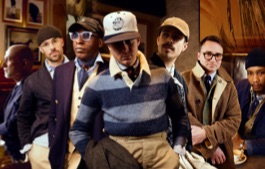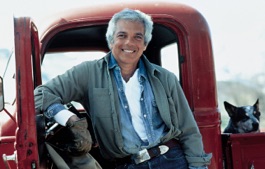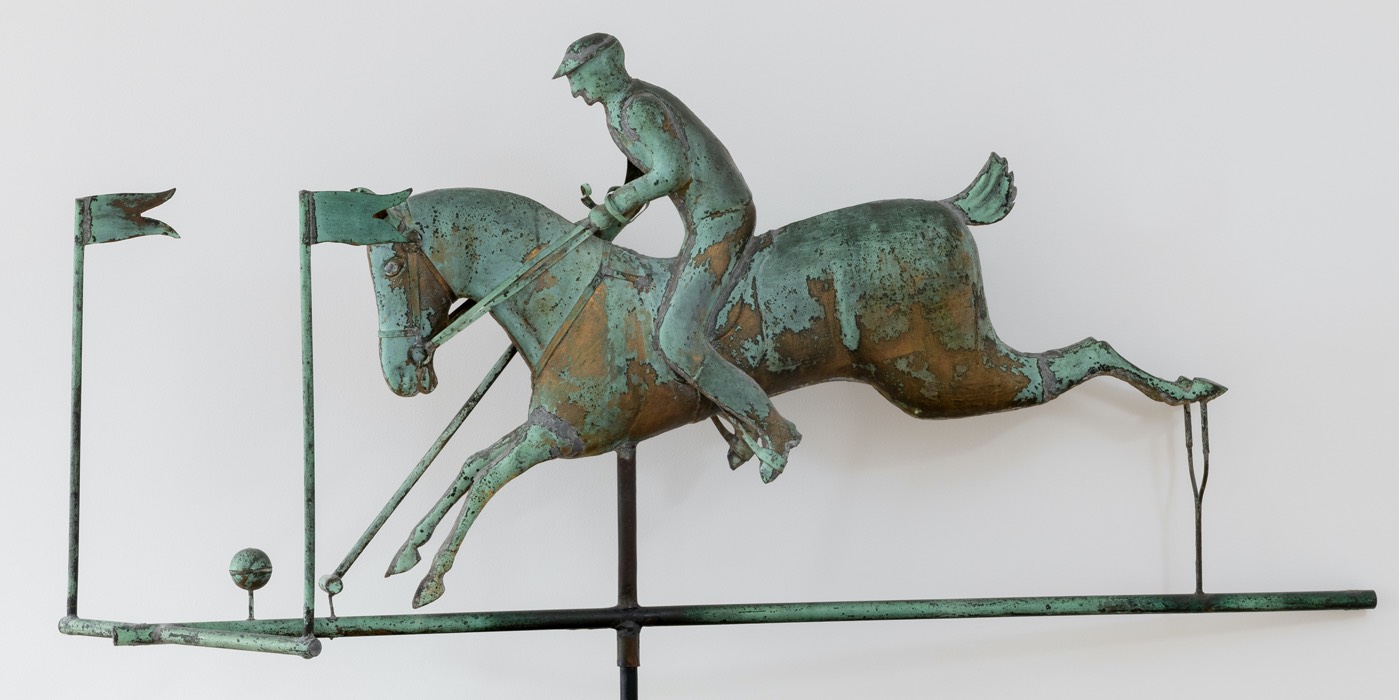
Come
Rain Or Shine
Jerry Lauren’s unmatched collection of American folk art—including a series of historic weather vanes—has long served as a point of inspiration for Polo designs
The cover of Antiques magazine. The pages of Architectural Digest. The halls of the American Folk Art Museum on New York’s Upper West Side. And now—or, rather, again—the intarsia knitting of a Polo sweater. These are all the places where you’re liable to find an unparalleled collection of vintage American weather vanes, along with other stunning examples of American folk art, belonging to Ralph’s brother, Jerry Lauren.
As the quintessential American designer, Ralph Lauren has looked to every corner of American style and history to inform his 50-plus years of creating iconic collections. Polo Country, a heritage, Americana-focused label started in the ’80s, is just one example.
An homage to the rustic country stores of New England and the down-home craftsmanship of early America, the label’s medley of rugged sweaters, leather moccasins, and flannel shirts were inspired by utility, made to last, age beautifully, and have since become highly collectible—much like Jerry’s famed and museum-quality collection of American folk art. (In 2021, the American Folk Art Museum’s exhibition and accompanying publication, American Weathervanes: The Art of the Winds, was supported by Jerry’s stunning personal collection of vanes.)
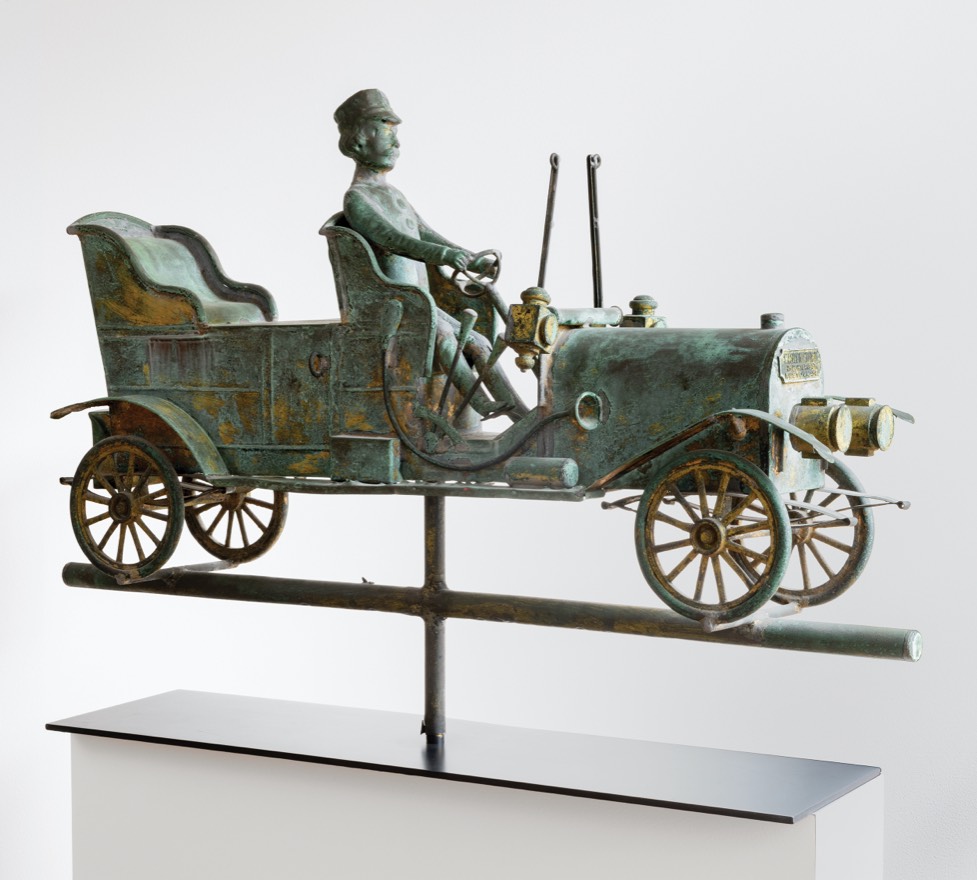
This season, two new sweaters in Polo’s Fall ’22 men’s collection pay homage to Jerry’s love of weather vanes. Based on archival Polo and Polo Country knits from the mid-to-late ’80s, the designs feature intarsia-knit weather vanes that were inspired by the antiques that Jerry was then just beginning to collect.
Below, Jerry reflects on his love of American folk art and how his passion has influenced decades of Polo’s sensibility.
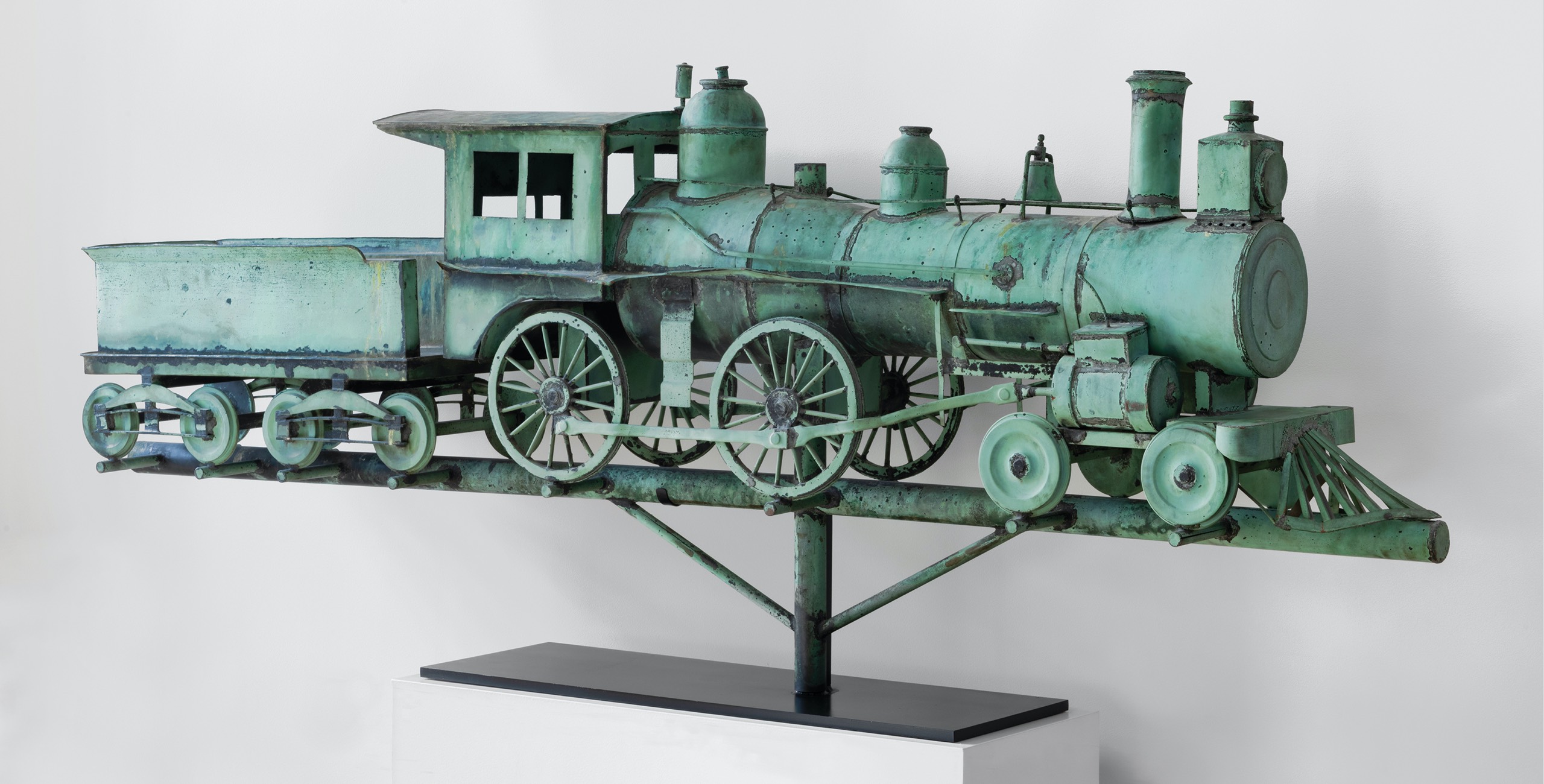
Your folk art collection is legendary. How did it all start?
My wife and I bought a house in Litchfield, Connecticut, that was originally built in 1785. We were very inspired to respect the age of the house in how we took care of it. We discovered the local antique country shows around New England and along the Maine coast. That house was my inspiration, and we’ve been collecting since then.
And each one of these pieces you’ve collected has so much history.
Exactly. There’s a history to the utility of the weather vanes and how they were used. I have a locomotive about 6 feet long made out of hollow copper so it spins around in the wind, of course. It was made to sit on top of a Massachusetts railroad building in the 1780s. Another, a wooden rooster, was on top of a courthouse, I believe. I also have a polo player on a horse, scoring a goal, which is amazing because, that’s Polo! It was made for a polo club, for them to have on their roof.
You can see the aging process on them, which is what’s special. Some of them were originally covered in gold sheet, and through the years the gold would be worn down by the weather, and develop a green verdigris patina on the surface. This is what makes them so intriguing, how they age.
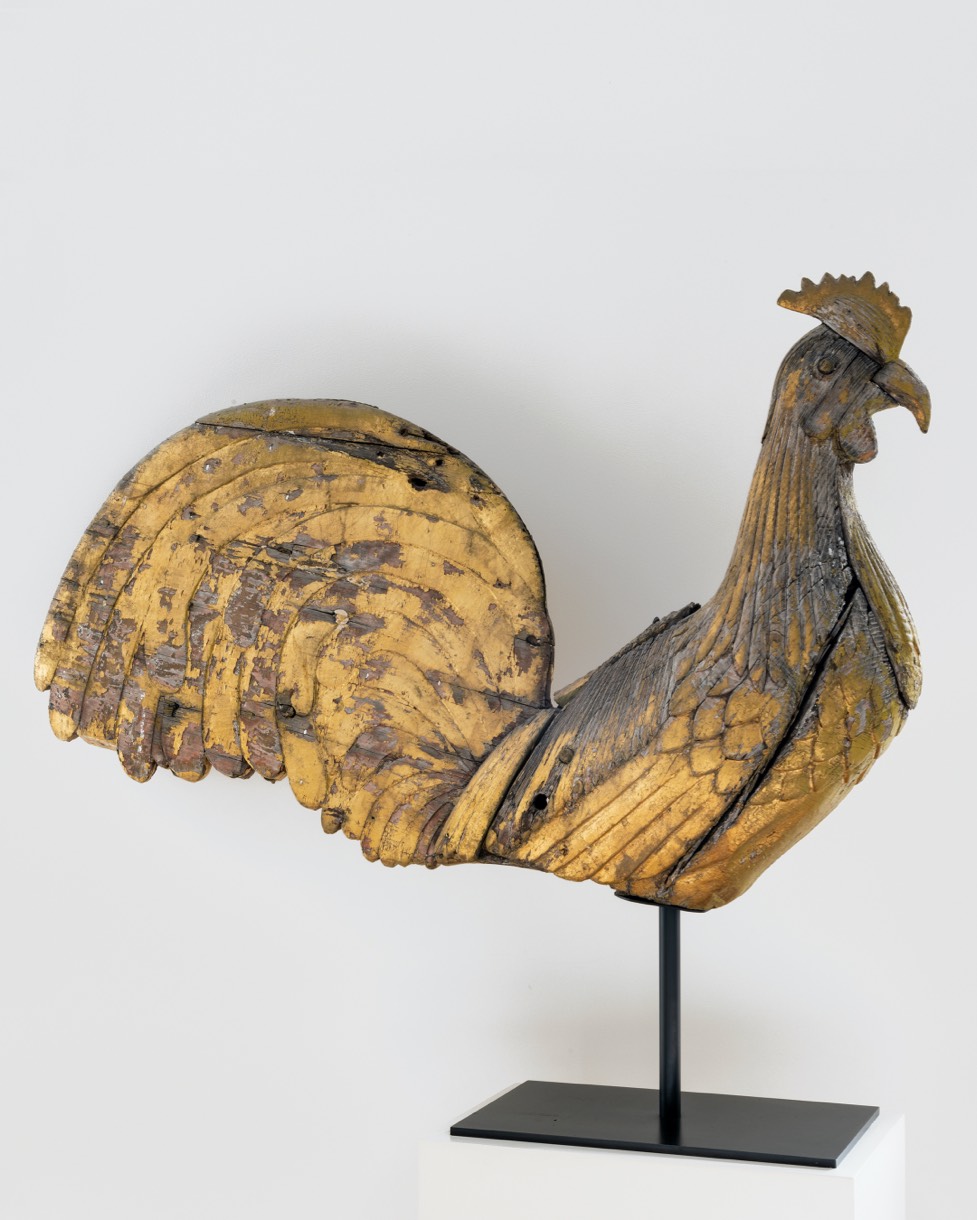
That American country feeling and those old country stores, that was the foundation of Polo Country back in the ’80s, right?
It’s the culture of the farmers and the ranchers, what they wore. Moccasins, quilts, old barns, American flags, denim, they’re all part of Polo Country. That was just one of the ways that Ralph has done so much celebrating of American history and culture—the country sweaters, the prairie skirts, the Westernwear, the calico textiles, patchwork sweaters, quilted patterns, American eagles. They’re all part of American culture.
Some of these old Polo Country sweaters have such a magic to them and stand the test of time, to the point where people have been collecting them for decades. Why is that?
It’s the rugged and homespun yarn we use, the construction, it’s all very authentic. But I think the purpose is to celebrate American country culture, from its roots: handmade, artisan work. And it’s all very historic, too. There are stories within these sampler quilts, for example. An old house in the country, horses and bulls, and American flags. They reveal our history.
What drew you to the weather vanes, specifically? You’ve got one of the finest collections of them in the world.
Picasso called weather vanes “great works of art,” and I agree. I’ve always been fascinated by the way they looked, the various forms they take, and where they originated. I really started buying them because I loved the beautiful patina. The greening of the copper, teakwood that turns grey. You see the way they lived, and the way they aged so beautifully.
But when my wife and I, we started to collect, it wasn’t just weather vanes. You can see on these sweaters [from Polo’s Fall ’22 collection]: you have weather vanes and a Native American decoration on one. The other one, an old American flag, a wagon wheel, a quilting pattern—these are all pieces of art that make up America. That’s why Polo represents the American designer. We reflect American history, and are inspired by the past.
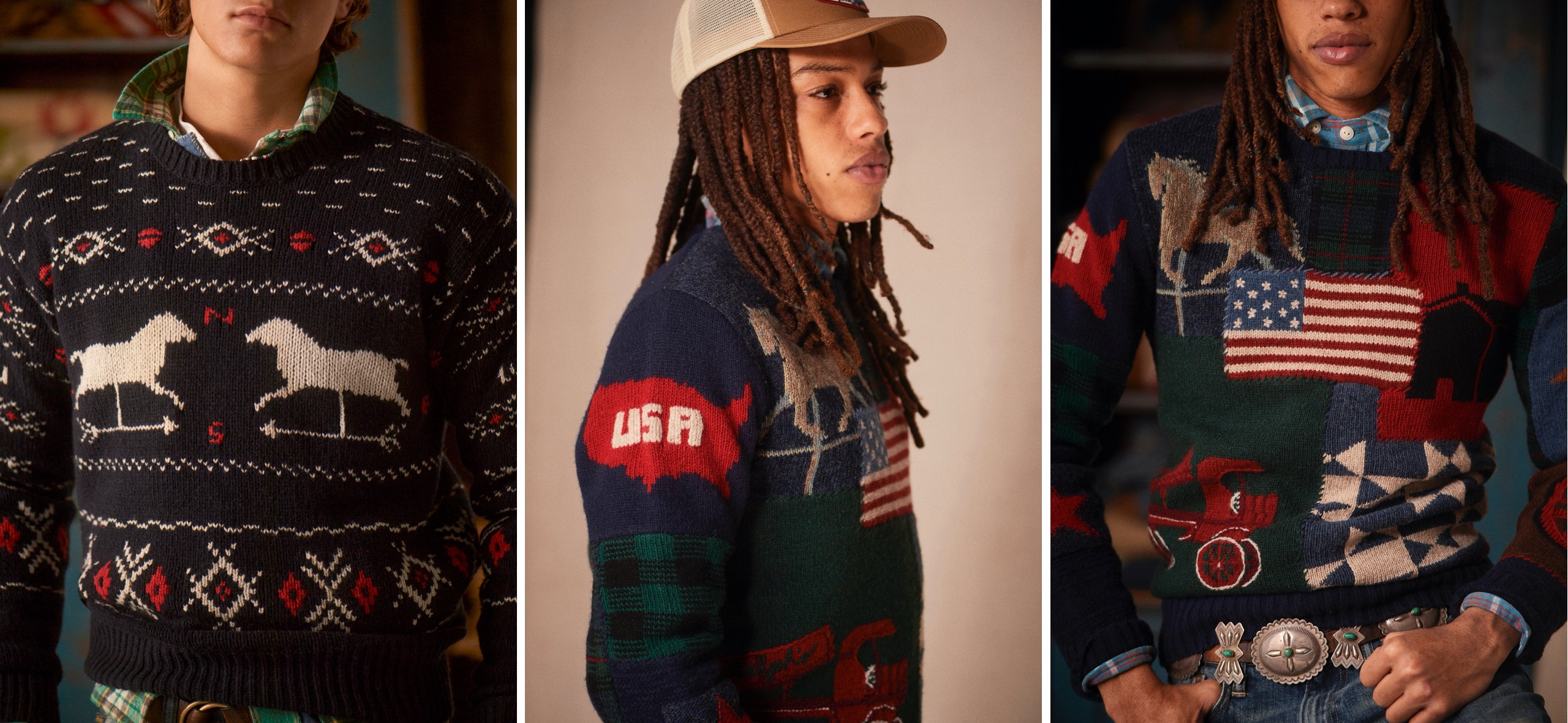
Like Polo, the appeal isn’t just about the item itself—a pair of broken-in jeans, a rustic country sweater—but what it represents: history, and craft.
That’s right. It’s about Americana.
What I collect, what we do, what’s inspiring, is all America. American folklore, from everywhere: from country craftsmanship to Native American art, there’s so much history behind it all. These things, whether it’s weather vanes or a collection of Bill Traylor paintings, who was a former slave and self-taught artist who started painting at age 85. This kind of folk art is America.
- Courtesy of Olya Vysotskaya
- © Ralph Lauren Corporation






